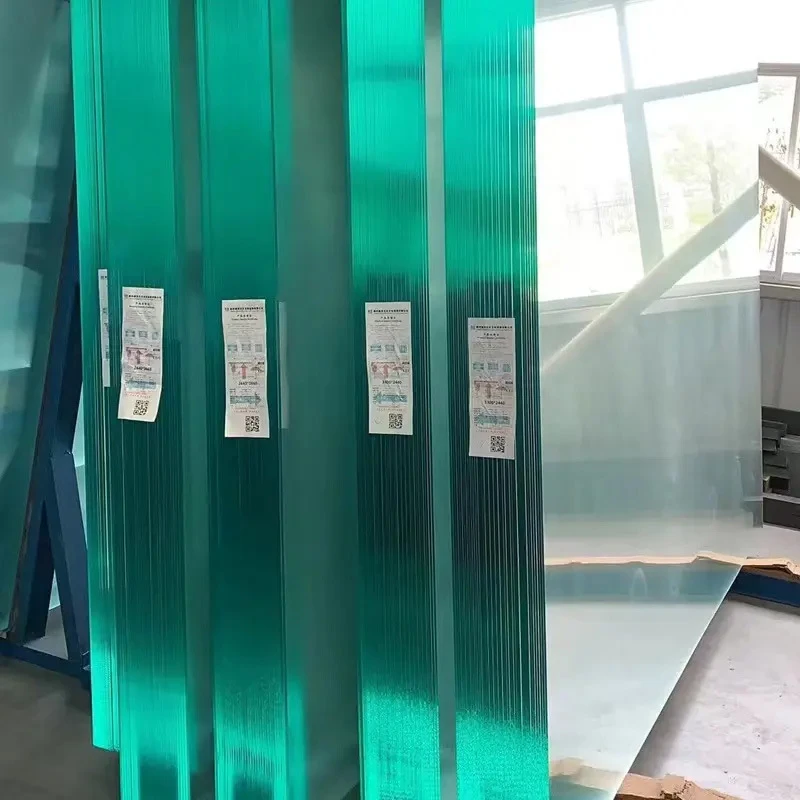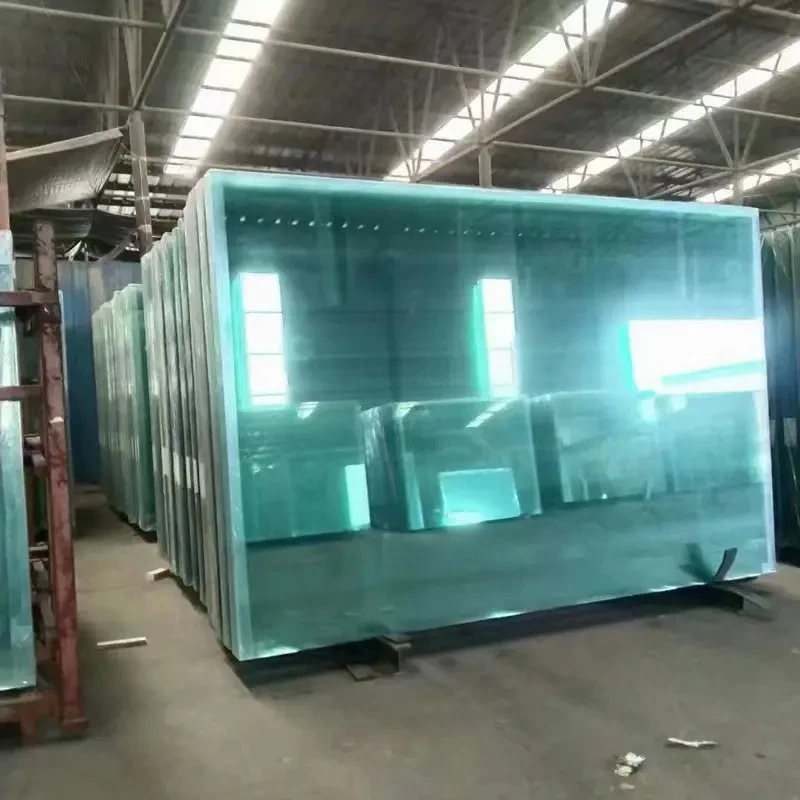The float glass process, a revolutionary method perfected by Sir Alastair Pilkington in the 1950s, represents a pivotal moment in the industrial production of flat glass. This article delves into this groundbreaking method, examining its intricate layers and providing insights drawn from real-world applications and expert evaluations in the field.

In essence, the float glass process involves floating molten glass on a bed of molten tin. This ingenious technique allows the glass to spread evenly, create a smooth surface, and form perfectly flat sheets. What makes this process uniquely transformative is its ability to produce high-quality glass with uniform thickness and minimal optical distortion. Prior to its invention, flat glass was manufactured by grinding and polishing plate glass or by rolling and grinding a cast glass sheet, both of which were labor-intensive and costly.
To appreciate this innovation fully, one must understand its intricate operations. Raw materials such as sand, soda ash, and limestone are melted in a furnace at temperatures reaching approximately 1700°C. Once the raw materials have melted into a molten state, they are fed onto the surface of the molten tin. The interface of glass and tin is crucial; tin’s low melting point (231.93°C) and high density mean glass naturally floats, forming a smooth and continuous ribbon. This ribbon is slowly cooled, forming perfect flat sheets of glass as it progresses down a float bath and into an annealing lehr where stress and tension from the cooling process are removed.

The advantages of this process extend beyond just the production level.
With the ability to produce glass that is 0.4mm to 25mm in thickness, the float glass process is versatile. This versatility translates into a range of glass products including tinted, laminated, and toughened glass, largely utilized in architectural projects, automotive industries, and high-end optics. The expertise of professionals in modifying the basic design enables compatibility with advanced coatings and innovative treatments to enhance performance features like energy efficiency and solar control.
the float glass process
Given the significant capital and technological investments required to construct float glass plants, these facilities often represent a concentrated nexus of expertise and authority in glassmaking. Globally, there are only a finite number of operational float lines, each overseen by specialists who uphold stringent quality standards to ensure credibility and trustworthiness in the finished products.
The practical knowledge and credibility accrued over decades of manufacturing experience position float glass as a cornerstone of modern industrial applications. Its impeccable quality fosters trust not only in individual product performance but also in the industry's overall capacity to innovate and exceed stringent client demands continuously.
In conclusion, the float glass process is a testament to human ingenuity, embodying a harmonious blend of science and expertise. It is a prime example of how innovation can transcend traditional methods, evolving to meet modern demands while laying foundations for future advancements. The glass produced through this method continues to enhance environments globally, symbolizing a high-standard product that maintains user trust through proven reliability and expert execution.
 Afrikaans
Afrikaans  Albanian
Albanian  Amharic
Amharic  Arabic
Arabic  Armenian
Armenian  Azerbaijani
Azerbaijani  Basque
Basque  Belarusian
Belarusian  Bengali
Bengali  Bosnian
Bosnian  Bulgarian
Bulgarian  Catalan
Catalan  Cebuano
Cebuano  Corsican
Corsican  Croatian
Croatian  Czech
Czech  Danish
Danish  Dutch
Dutch  English
English  Esperanto
Esperanto  Estonian
Estonian  Finnish
Finnish  French
French  Frisian
Frisian  Galician
Galician  Georgian
Georgian  German
German  Greek
Greek  Gujarati
Gujarati  Haitian Creole
Haitian Creole  hausa
hausa  hawaiian
hawaiian  Hebrew
Hebrew  Hindi
Hindi  Miao
Miao  Hungarian
Hungarian  Icelandic
Icelandic  igbo
igbo  Indonesian
Indonesian  irish
irish  Italian
Italian  Japanese
Japanese  Javanese
Javanese  Kannada
Kannada  kazakh
kazakh  Khmer
Khmer  Rwandese
Rwandese  Korean
Korean  Kurdish
Kurdish  Kyrgyz
Kyrgyz  Lao
Lao  Latin
Latin  Latvian
Latvian  Lithuanian
Lithuanian  Luxembourgish
Luxembourgish  Macedonian
Macedonian  Malgashi
Malgashi  Malay
Malay  Malayalam
Malayalam  Maltese
Maltese  Maori
Maori  Marathi
Marathi  Mongolian
Mongolian  Myanmar
Myanmar  Nepali
Nepali  Norwegian
Norwegian  Norwegian
Norwegian  Occitan
Occitan  Pashto
Pashto  Persian
Persian  Polish
Polish  Portuguese
Portuguese  Punjabi
Punjabi  Romanian
Romanian  Russian
Russian  Samoan
Samoan  Scottish Gaelic
Scottish Gaelic  Serbian
Serbian  Sesotho
Sesotho  Shona
Shona  Sindhi
Sindhi  Sinhala
Sinhala  Slovak
Slovak  Slovenian
Slovenian  Somali
Somali  Spanish
Spanish  Sundanese
Sundanese  Swahili
Swahili  Swedish
Swedish  Tagalog
Tagalog  Tajik
Tajik  Tamil
Tamil  Tatar
Tatar  Telugu
Telugu  Thai
Thai  Turkish
Turkish  Turkmen
Turkmen  Ukrainian
Ukrainian  Urdu
Urdu  Uighur
Uighur  Uzbek
Uzbek  Vietnamese
Vietnamese  Welsh
Welsh  Bantu
Bantu  Yiddish
Yiddish  Yoruba
Yoruba  Zulu
Zulu 


